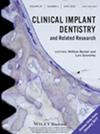Selection of Cement Materials and Isolation Techniques for the Effective Removal of Residual Cement in the Cementation
Abstract
Aim
This study aimed to investigate the impact of different cement and cement isolation techniques used in implant-supported restorations on eliminating residual cement.
Materials and Methods
This study employed two distinct cement isolation methods: rubber dam and polytetrafluoroethylene tape. The study comprised three primary groups comprising 30 samples, categorized based on the isolation methods and control group. The cement excess was removed with a dental explorer probe for the control group. Moreover, three different cement materials were used: polycarboxylate, temporary implant, and resin cement. Each primary group was subdivided into three subgroups according to the type of cement used, leading to 10 samples per subgroup. Cobalt-chromium superstructures, intended to be cemented onto the implant analog-abutment complex, were fabricated using the direct metal laser sintering method. The crowns were filled with cement, and after the cementation process, any excess cement was subsequently removed using the designated isolation method. After removal, images of the cement residues at the gingival margin of the crown-abutment complex and occlusal surface of the gingiva around the implant were captured. These images were then analyzed using Adobe Photoshop CC2018, wherein excess cement was marked using the Lasso Tool to quantify the total area. The excess cement data was analyzed using IBM SPSS Statistics Version 23 software.
Results
The results of the three-way ANOVA showed a difference in excess cement amounts between the isolation methods and cement materials (p < 0.001). In evaluating the isolation methods, the rubber dam was identified as the most suitable for temporary cement, while polytetrafluoroethylene tape was determined as the most suitable method for resin cement. Using a dental probe resulted in the highest amount of residual cement across all cement materials. Among the cement types, polycarboxylate cement exhibited the highest residual cement amount, followed by temporary implant cement and resin cement.
Conclusions
The amount of excess cement was influenced by the isolation method and the type of cement used. The rubber dam emerged as the most effective method for minimizing cement residues. The most significant amount of residual cement was identified for polycarboxylate, whereas the lowest amount was observed for resin cement. The appropriate isolation method should be selected based on the type of cement.


 求助内容:
求助内容: 应助结果提醒方式:
应助结果提醒方式:


